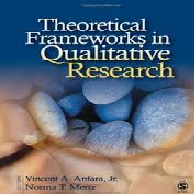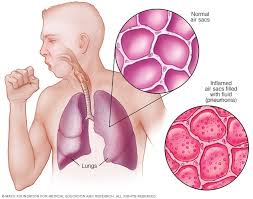
Human Dignity
Human Dignity
Order Instructions:
Assignment Essay
Hello Witter Sir, how are you today
Thank you so much for helping me for this essay assignment. This is a 2000 words essay related to Human Dignity and Gender Selection.
In this unit university wants student to follow criteria as they give us in a sample plan for essay. Please check the sample plan for essay.
They give us 2 perspectives and relevant reading. So reading will be the main source to find out the information but you can use the other resources too, but put more focus of the give reading.
I am going to attach those readings with material, please go through it before starting essay.
You have to give answer of given question for perspective 1 and perspective 2. You don’t have to follow question answer format, please follow the essay format include answer to those questions.
• Perspective 1 is belongs to Quadrant 1A so I am going to include material given to us for read for the understanding of quadrant 1A
• Perspective 2 is belongs to Quadrant 1B so I am going to include material given to us for read for the understanding of quadrant 1B
Task: 2000 words (or equivalent)
Choose one case study from those presented.
Check the case study in attached material + Sample essay plan, otherwise they wont mark the paper, if i dont follow the sample plan
Explain why you believe this to be an issue where human dignity is a critical factor.
Analyse at least two perspectives on this particular case. The following questions should act as a guide in your analysis.
1. What understanding of the concept of human dignity appears to be at work in each perspective?
2. What are the social attitudes, norms, or circumstances that may have influenced each perspective? To what extent do these social attitudes, norms, or circumstances impact on the understanding of human dignity in each perspective?
3. How does each perspective justify particular actions or choices with reference to human dignity?
4. In this unit, we have considered human dignity and the human person as multidimensional. If you consider in isolation the argument of each perspective in turn, what aspects of human dignity could be jeopardised by any actions arising from those perspectives?
• APA Referencing
• At least 15-20 genuine references
• 90 % references has to be research based Journal article AND books
• Australian and New Zealand based study articles are preferable.
• Please have a look Rubric guideline for given topic, I need good grades in this assignment so please do me a favour and try to give me a best quality work
if you jump on this link you will find the relevant material
Module 2: What is human dignity? – EQUELLA – Australian Catholic …
https://leocontent.acu.edu.au/integ/gen/4b6f57b3-f707…/40/viewcontent?_…
If you need any other clarification please let me know
Once again thank you so much for you kind co-operation
SAMPLE ANSWER
HUMAN DIGNITY
Introduction
For decades, sex selection has been a controversial issue, choosing the sex of a child is viewed as a justifiable act since there is no harm done to anyone .I believe that gender selection creates balance in a family and culturally viewed as a desirable practice to fulfill social norms. However others ethicists believe that sex selection reinforce the idea of sexual discrimination within our societies (Caulfield & Brownsword, 2012).This explains why there are renewed efforts from civil societies and government to analyze arguments presented by different authors who either support or oppose sex selection.
This essay analyzes the meaning of human dignity from two different perspectives, the essay examines how human dignity is defined by our expression of choices and as an inherent value by the society. Based on a case study, the essay describes the social attitudes, norms and circumstance that influence such choices and their impact on our understanding of human dignity. The essay presents justifications of particular actions concerning sex selection and analyzes some of the features of human dignity that can be put at risk due to actions arising from these two perspectives mentioned therein above.
Perspective 1: The concept of human dignity
Human dignity is defined based on the belief that dignity is inherent; hence, human beings posses specific capabilities that are not found in other creatures. However, people define human dignity differently. Some people view human dignity as human life that represents personhood. From perspective 1, human dignity is defined based on beliefs that dignity is inherent. Peter Singer supports this view arguing that a human being is considered to be a person if s/he is able to display specific capabilities, meaning that the being that bears this dignity is worth the respect. From this perspective, human dignity can be defined as something all humans already posses by simply being human which other creatures do not posses (Dyal, 2014). Despite the various social reasons for sex selection which seem to be justified including having a family balance or replacing the deceased child or for cultural reasons, these reasons do not define human dignity especially in situations where boys are preferred more than girls. Blyth, Frith and Crawshaw argue that gender selection is justifiable for the sake of reproductive autonomy. The authors are against the idea of letting parents select the sex of their children especially in societies where most people have strong preference for male children over female. This is because such actions will discriminate women and girls hence reinforcing sexism ideas in the society. Blyth, Frith and Crawshaw believes that there is no difference between societies in Southern Asia and Eastern when compared to those of European nations as both of them have preference for male children. Based on this perspective, permitting gender selection is considered as discrimination against specific gender making it less valuable according to Dyal (2014).
Kalfoglou et al., (2013) view sex selection as ideas that reinforce sexual discrimination. Selecting a particular sex can cause rejection of the child if the child does not manifest the parents expected gender traits. Based on this viewpoint, Blyth, Frith and Crawshaw believe that legalization of gender selection can enahnce sexist stereotypes within the society because sex selection lowers human dignity (Dyal, 2014). In addition, sex selection has resulted in gender disparities in many countries especially in Asian countries like China and India leading to patriarchal societal agreements perceived to discriminate girls and women (Mudde, 2010).
The social attitudes, norms and circumstances that influence such perspective
Due to advanced technology, the culture of sex selection has become more popular causing harm to females. Parents who are able to access technology have the ability to control the sex of their children escaping societal stigma of failing to give birth to a son. Many parents avoid giving birth to girls since they are viewed as individuals not worth living .Parents perceive that sex selection gives them the ability to choose what type of children they want. However, this process is inhumane since it makes children to be more of products (Webb,2014).
Sex selection can also make parents be unwilling to accept some of their preferred sex shortcomings lowering the child’s self esteem. Having a strong preference for a specific sex can cause harm for the unwanted sex including rejection and killing to avoid societal blames and eliminate shame. But proponents of this idea argue that it is normal for such ideas to be rejected initially especially when people are unfamiliar with the idea. Those opposing the idea of sex selection state that that having children is not a right that one can put conditions to but emphasize that children should be viewed as gifts (De Melo-Martín, 2013). These arguments are based on our cultural beliefs.
Caulfield & Brownsword (2012), base their argument on the traditional pattern of giving gifts whereby a gift is supposed to be received without putting any condition to it. A gift is something we should accept unconditionally, this also applies to children. From a cultural perspective, sex selection promotes the idea of treating children as a commodity; it is compared to buying and selling of children. Choosing some of the features we want is acceptable only to products like cars or other commodities but does not apply to human beings. Therefore, sex selection lowers and discriminates specific gender.
Justification of specific actions in relation to human dignity
Edgar Dahl argues that before a practice can be allowed or prohibited the presumption should be in favour of liberty. According to Edgar, individuas should be permitted to make life choices without any state intervention especially if the situation does not necessarily cause harm to anyone. For him, the objections presented do not show how sex selection causes harm especially for Western societies. Edgar views life as having liberty and people should live as they want to so long as a person does not harm or infringe upon other people rights (Lee, 2016). Proponents of sex selection argue that the practice is considered harmful based on sociological and psychological assumptions. They further argue that since sex selection is an act that is contrary to an individual’s religious or moral beliefs, the practice should not be permitted by legislation (Smolin, 2013).
A report by The Task Force on ethics and laws highlights the common objection arguments used to reject the idea of sex selection. The report indicates that sex selection is compared to playing with God. Such arguments have been applied to all medical innovation before. It started by rejecting the use of chloroform to relieve pain associated with childbirth, this act was viewed as going against God’s will this also applied to the use of inoculation (Li & Pantano, 2013). Ironically, previous medical innovations viewed as going against God’s will have become part of acceptable medical practices, therefore such objections have not been taken seriously, such arguments are considered as religious claims .Proponents of sex selection argue that individuals seeking the option of sex selection should only refrain from the idea if it contravenes his religious beliefs but laws should not be imposed on people based of religious views (Dondorp et al, 2013).
Human dignity that can be jeopardized by actions arising from this perspective
Defining human dignity based on our expression of choices affects public opinion about such ideas. If these perspectives are not comprehensively analyzed by research public opinion will be flawed. The main concern is that people can use limited philosophical analysis to influence policy discussions .The definition of human dignity should not be derived from the fact that it is an individual choice but it should be to view the practice from both public and professional bioethical discussions as recommended by Ethics Committee of the American Society for Reproductive Medicine (2015).
Perspective 2: Human dignity as acquired characteristic.
From perspective 2, human dignity is considered as acquired characteristics. From this perspective human dignity is viewed as pride in oneself or having the sense of own worth as a human being to live a meaningful life that is respectful .Therefore, any situation that compromises or humiliates such position is termed as a threat to human dignity. Choosing particular sex over the other for non-medical reasons places expectations on a specific child, this fails to recognize individual personhood.
Scully, Shakespeare and Banks emphasize on the fact that moral judgment is usually made from a lay person’s perspective. This means that non-experts do not justify the fact that sex selection is immoral. Based on a focus group discussion by the authors, lay people usually do not engage in philosophical arguments; their arguments are based on their beliefs. They use metaphors to support their intuitions, for example they compared children to gifts. From this perspective, children are viewed as parent’s property yet they are their own persons. Putting too much expectations on the selected children does not give them the respect making them not to be autonomous as human beings are suppose to be(Claassens, et al, 2013). Parents who select the sex of their children view their children as different people rather than the individual the child is suppose to be. Wudarczyk et al (2013) argue that choosing the sex of a child is failing to respect the human intrinsic values of the individual child.
Social attitudes, norms and circumstances that influence such perspective
In western societies, there is no preferred sex but selection of sex focuses more on creating gender balance in the family by having both boys and girls. These are common occurrences observed in Australia, Sweden and the UK .Even though sex selection does not have negative effects in these countries; Asian countries like China, Korea and India are faced with challenges associated with sex selection. These countries prefer boys to girls. This has led to over 10 million abortions within the last 20 years (Moskovian, 2013).
Activists in Asia are calling for the ban of sex selection, however, due to the different reasons parents in the UK and India have for choosing the sex of their children, banning worldwide practice of sex selection will not change the situation especially in India. So long as there are religious and economic incentives attached to boys, banning sex selection will not have any effect especially in Asian countries. Given the fact that majority of the UK population would still prefer their first children to be boys, sex selection technology will be misused to fulfill these parents’ desires (Dyal, 2014).
Justification of specific actions in relation to human dignity
The claims made that sex selection does not promote the inherent human value is considered as an intuitive reaction but not a reasonable moral response. The fact that certain human actions are unnatural does not necessary makes these actions morally wrong. For example heart transplant is unnatural but is meant to save human life (De Melo-Martin, 2013). The fact that those opposed to the claims that sex selection ought to be applicable for medical purposes is not considerate. Medical technologies helps couples with sex-linked genetic disorder produce a healthy child, this does not translate to misuse of technology to fulfill their personal desires. Furthermore, those in support of sex selection argue that this practice eliminate girls in a humane way compared to other methods like abortion or neglect, meaning that girls whose birth can be avoided will not be exposed to oppression or any discrimination according to Tregenza-Parker(2013).
In the current health care systems, physicians offer services that does not have direct medical benefits but add value to inviduals who seek for such services like cosmetic surgeries and ultrasound. The same view is applicable when it comes to sex selection. Offering sex selection services is also viewed as misuse of limited medical resources, but offering other services like face-lifts is not termed as misallocation of limited medical resources. The idea of sex selection has been misrepresented in most cases (WHO Press, 2011).
The most common argument is that sex selection causes social imbalances of gender in countries such as China and India. The concern that sex ratio is a threat to the western societies is more of an intuitive reaction with not concrete evidence. The idea of calling sex selection a sexist sin is not justifiable because most parents who prefer choosing the sex of their children do so based on the fact that they are motivated by the idea to have children from both sexes. People who belief that raising a boy is different from a girl are those who base their thinking on cultural values of children whereby girls are considerate be different from boys (Cooley & Chesnokova, 2011).
Human dignity that can be jeopardized by actions arising from this perspective
It is not essay to draw legal lines to permit some forms of sex selection while limiting others. The main worry in such situation is how parents are likely to spend their money on technology to ensure that their children are born with the specifications they want. This can result to misuse of technology (Lee, 2016).
Conclusion
It not surprising that sex selection is controversial, different people justify their reasons for gender selection by viewing it as a desirable practice aimed at fulfilling societal norms. Others view sex selection as a practice that reinforces discrimination at the same time goes against the inherent nature of human value. These two perspectives describe human dignity from different views. The case study of sex selection helps us understand some of the social attitudes, norms and circumstances that can influence our choices and how sex selection from these two perspectives can impact on our understanding of human dignity based on the justification presented in support of such actions. In conclusion, it is important to define human dignity from a multi-dimensional perspective than define it from isolated arguments to accurately define its meaning.
References
Caulfield, T., & Brownsword, R. (2012). Human dignity: a guide to policy making in the
Biotechnology era? Nature Reviews Genetics, 7(1), 72-76.
Chapman, A. R., & Benn, P. A. (2013). Noninvasive prenatal testing for early sex identification:
A few benefits and many concerns. Perspectives in biology and medicine, 56(4), 530-
547.
Claassens, J. et al (2013). Searching for Dignity: Conversations on human
dignity, theology and disability. Toronto. Sun media.
De Melo-Martín, I. (2013). Sex selection and the procreative liberty framework. Kennedy
Institute of Ethics Journal, 23(1), 1-18.
Dondorp, W., De Wert, G., Pennings, G., Shenfield, F., Devroey, P., Tarlatzis, B., & Diedrich,
- (2013). ESHRE Task Force on ethics and Law 20: sex selection for non-medical
reasons. Human Reproduction, 28(6), 1448-1454.
Cooley, D. & Chesnokova, I. (2011). Sex Selection Abortion in Kazakhstan:
Understanding a Cultural Justification, Developing World Bioethics 11, (3). 159–60.
De Melo-Martin, I. (2013). The Ethics of Sex Selection. Ethics and Emerging Technologies, 90.
Dyal, M. (2014). Whether sex-selection for non-medical reasons, using pre-implantation genetic
diagnosis, should be permitted in the UK. University of Birmingham.
Ethics Committee of the American Society for Reproductive Medicine. (2015). Use of
Reproductive technology for sex selection for nonmedical reasons. Fertility and Sterility,
103(6), 1418-1422.
Kalfoglou, A. L. et al (2013). Ethical arguments for and against sperm sorting for non-medical sex selection: a review. Reproductive biomedicine online, 26(3), 231-239.
Lee, M. Y. K. (2016). From the case of sex discrimination to the ideas of equality and equal
opportunities. In Ethical Dilemmas in Public Policy (pp. 111-127). Springer Singapore.
Li, Q., & Pantano, J. (2013). The Demographic Consequences of Gender Selection Technology.
Review of Economics and Statistics, Vol. 95, (5): 1549–1561.
McGowan, M. L., & Sharp, R. R. (2013). Justice in the context of family balancing. Science,
Technology & human values, 38(2), 271-293. Current opinion in psychiatry, 26(5), 474.
Tregenza-Parker, G. (2013). Sex Selection for Family Balancing? A Legal and Ethical Analysis.
Smolin, D. M. (2013). Sex Selection, the Missing Girls of China and India, and the Challenges of Technological Control of Procreation. Regent JL & Pub. Pol’y, 6, 49.
Moskovian, A. (2013). Bans on Sex-Selective Abortions: How Far is Too Far?. Hastings
Constitutional Law Quarterly, 40(2).
Mudde ,A. (2010).‘Before You Formed in the Womb I Knew You’: Sex Selection and Spaces of
Ambiguity, Hypatia 25 (3).563–64.
Webb, D. C. (2014). The Sex Selection Debate: A Comparative Study of Sex Selection Laws in
the United States and the United Kingdom. South Carolina Journal of International Law
and Business, 10(1), 6.
WHO Press (2011). World Health Organization, Preventing Gender-based Sex Selection: An
Interagency Statement OHCHR, UNFPA, UNICEF, UN Women and WHO. Geneva.
WHO Press
Wudarczyk, O. A.et al (2013). Could intranasal oxytocin be used to enhance relationships? Research imperatives, clinical policy, and ethical considerations.
We can write this or a similar paper for you! Simply fill the order form!












